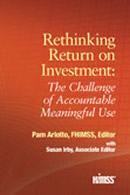Journey to High Value Healthcare: The Board’s Role in Clinical Transformation
As American health care delivery transitions to a value-based model, transformation leadership will be needed within each organization to create the health system of the future.
In Journey to High Value Healthcare: The Board’s Role in Clinical Transformation, author Pam Arlotto, President and CEO of Center affiliate member Maestro Strategies, provides a guide for boards and the health care C-Suite as they align strategies, decision-making tools, processes, information technology and people to build new organizational capacity for clinical transformation.
This publication defines the role of the board in overseeing this transition and explores the concept of an Information Technology (IT) Committee of the board. It also discusses meaningful use of electronic health records as part of the necessary foundation for accountability.
The author provides a snapshot of where the health care industry is today in implementing meaningful use of information technology. She also discusses eight strategies to help boards develop a clear plan and evaluate progress toward accountable meaningful use. Assessment questions are included to help boards critically examine their own institution’s progress.
This publication can be used as the basis of a board education session or strategic planning retreat that focuses on implementing IT and using health information to drive delivery of more accountable, value-based care. Boards can also use this publication to guide discussion of how they can best oversee information technology resource allocation and implementation.
published by The American Healthcare Association’s Center for Healthcare Governance
To download a copy of the white paper, click here.


